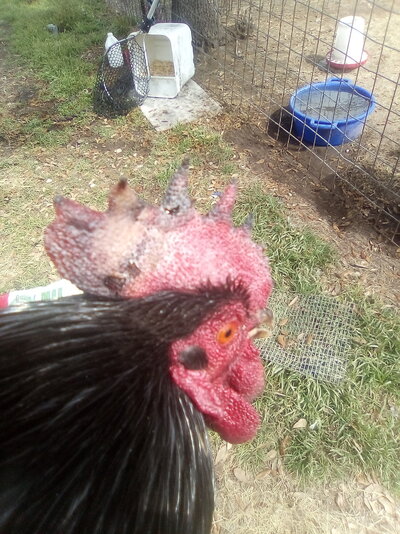Hello all, I am in south Texas and after the horrible cold front we had this past week with snow, ice and freezing temps, as well as with working, today was the first day I was able to thoroughly go through and check my entire flock of chickens. All of my hens are fine, as well as four of my roosters. However, two of them have frostbite of their combs. The first one is a free-range barred rock, he's about 9 months old, and the entire top third of his comb is black. The second one is my cochin bantam rooster, about half of his comb is frostbit, as well as some on his wattles. The skin on the back of his comb is already starting to slough off, and it looks infected, there is a good bit of oozing going on. I was trying to find a solution, and came across dubbing. I do work in a vet clinic and am going to talk to the vets tomorrow to see what they think/recommend on the procedure. In the meantime, I was wondering what y'all recommend in this situation. In both, about 1/3 to 1/2 of the comb is compromised, one looks infected, and I don't want them to suffer and slowly have their combs rot off, or get an even worse infection. The picture below is of the cochin bantam.






